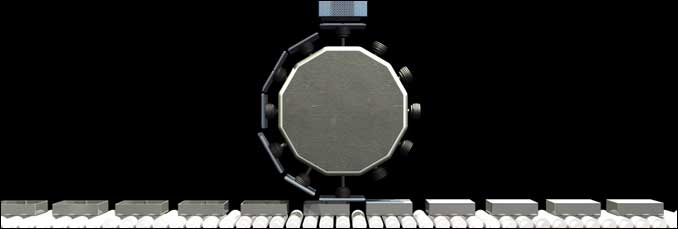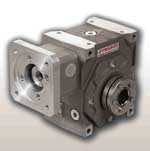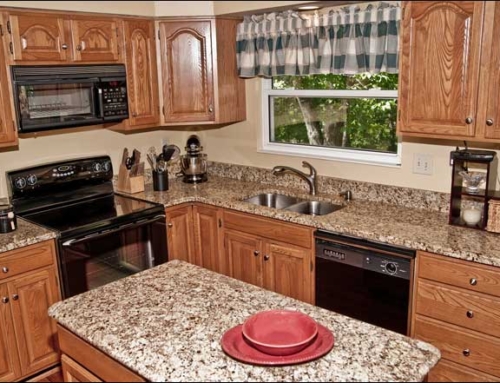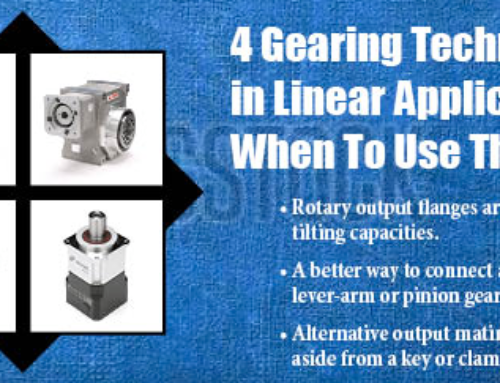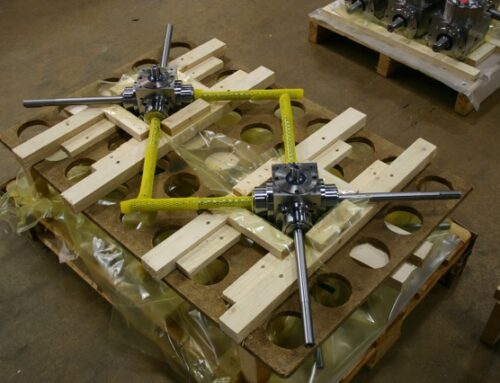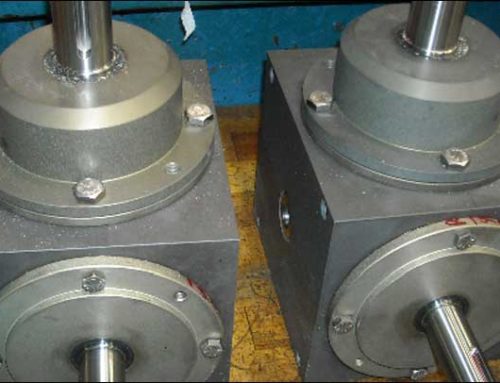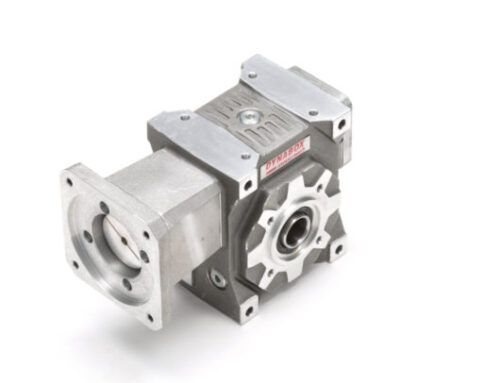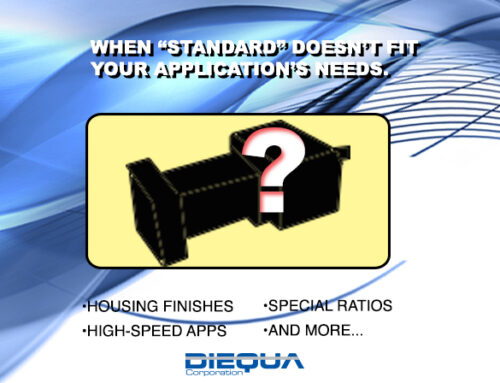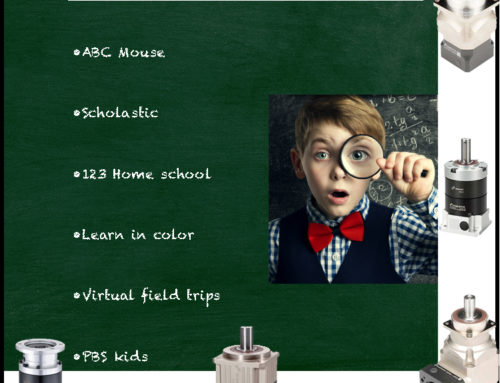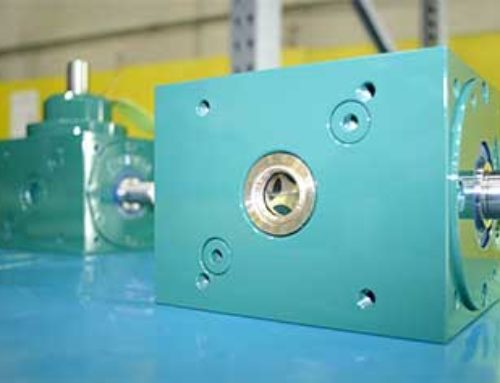Backlash, torsion, and transmission error are all gearbox problems that can contribute to lost motion in a drive system that includes mechanical components. But this doesn’t mean you should eliminate these components, as the mechanical advantages of their use are significant. They just need to be monitored, analyzed and controlled.
A customer came to us with a gearbox problem that looked to include lost motion as one of the symptoms. This customer produced a line of packaging assembly machines, one series of which put tops on containers. Their typical drive design wasn’t working on a customized machine they had made and they weren’t sure why.
The difference in this container from others was that it had a much tighter fitting top than they had previously had to deal with. This meant that not only was the fitting tolerance much smaller than usual but that it required more force to close the container.
The package was designed with chamfered edges so the tops could pilot onto the container for easier assembly. But it still wasn’t working properly as some of the containers were being crushed. A second problem was the existing gearbox was making noise and the servo motor was getting hot. All were very perplexing problems that they hadn’t experienced in previous machines.
During the ensuing analysis, it was determined that the motor was pulling many more amps than expected. This likely meant that the torque required for the operation was higher than originally thought. But “why” was the question.
It seemed the torque required to close a tight-fitting container was higher than for a loose-fitting top. But so much?
As it turned out, the closing force was only part of the problem. The real culprit was the acceleration and deceleration torque required to maintain precise synchronization of the wheel to the incoming containers. Positioning tolerances were critical to avoid damaging the product so the feedback and control system had to work much harder. Why? Because it had to constantly adjust for lost motion.
The two things we began to focus on were system backlash and torsional rigidity. The backlash was an issue with the existing gearbox, but reducing it by itself wasn’t the Holy Grail. The system rigidity problem was accentuating its negative effect.
Backlash is defined by clearance or “play” in a system. In gearboxes, it’s manifested by the space between the gears. In a loaded system driving in one direction, backlash isn’t usually a concern. It’s much more important in reversing applications or in applications with intermittent loads.
Torsion is a twisting motion and rigidity is the amount of twist for a given amount of torsion. The higher the rigidity, the less twist.
So, how were these issues affecting the positioning accurately? The torsion problem had something to do with the inertia of the wheel and the need to have it in a precise position to place the top on the container. There was an adequate feedback system in place to tell the servo controlling the wheel exactly where the incoming containers were located. Another part of the system to verify the position of the wheel was also in place. Therefore, electronically everything was set up correctly. It was this dynamic control system that exposed the mechanical problem.
As positional errors were recognized, the control system had to accelerate or decelerate the wheel to get into the correct position. When accelerating, the inertia of the wheel created a resistance, which required an increase in motor torque. However, the increased torque wasn’t instantaneously transmitted through to the wheel because a portion was absorbed by torsion in the connecting elements. These included the gearhead, the shaft coupling, and the wheel journal shaft itself. Hence, it didn’t get to where it needed to be when it needed to be there.
When the wheel needed to be decelerated, the motor tried to slow it down. But because of the wheel’s rotary inertia, it continued to rotate and overdrive the gearhead, again not getting where it needed to be in time. As the motor tried harder and faster to compensate for positional errors, the torque required also expanded, taxing the gearhead above its capacity. Everything mechanical was going wrong. What to do?
Our suggestion started with offering our Girard Dynabox Expert Servo Worm gearhead as a replacement for the industrial product that was in place. The Dynabox series, offered in backlash levels of 10, 5 and 1 arc minutes, was designed specifically for right angle servo applications and available in single-stage ratios from 5:1 to 90:1. The expert version, with less than 1 minute, would eliminate virtually all the system backlash, solving this portion of the problem.
The next suggestion was to increase the wheel journal shaft diameter and eliminate the connecting coupling between the journal shaft and the gearhead. The rigidity of the existing design wasn’t adequate for the dynamic motion required. The Dynabox has a large output bore that allowed the gearbox to be shaft mounted directly on the larger journal shaft and then connected with a shrink disc. This provided a zero backlash connection and higher rigidity, not only because of the journal shaft’s larger diameter but also because it could now be shorter.
Because the customer wasn’t using his available motor speed, we also suggested increasing the gearbox ratio. This would reduce the reflected inertia back to the motor allowing faster acceleration with less motor torque.
With lower backlash and higher rigidity, the system was more responsive and required fewer dynamics to make the smaller adjustments. This stabilized the torque requirement allowing the gearbox to see less load variation, resulting in less wear and tear. Although some structural changes were necessary, the machine began to achieve the performance it was designed for.
While DieQua prefers to work with customers at the beginning of a design, sometimes we have to come in after the fact when things aren’t working as planned. That’s fine too. Very often, our application experience gives us insights into the direction our troubleshooting efforts should take. And that usually results in a much better gearbox solution.
Contact DieQua if you are experiencing gearbox problems and aren’t getting the performance you expect out of your system. We just might have a better idea.

